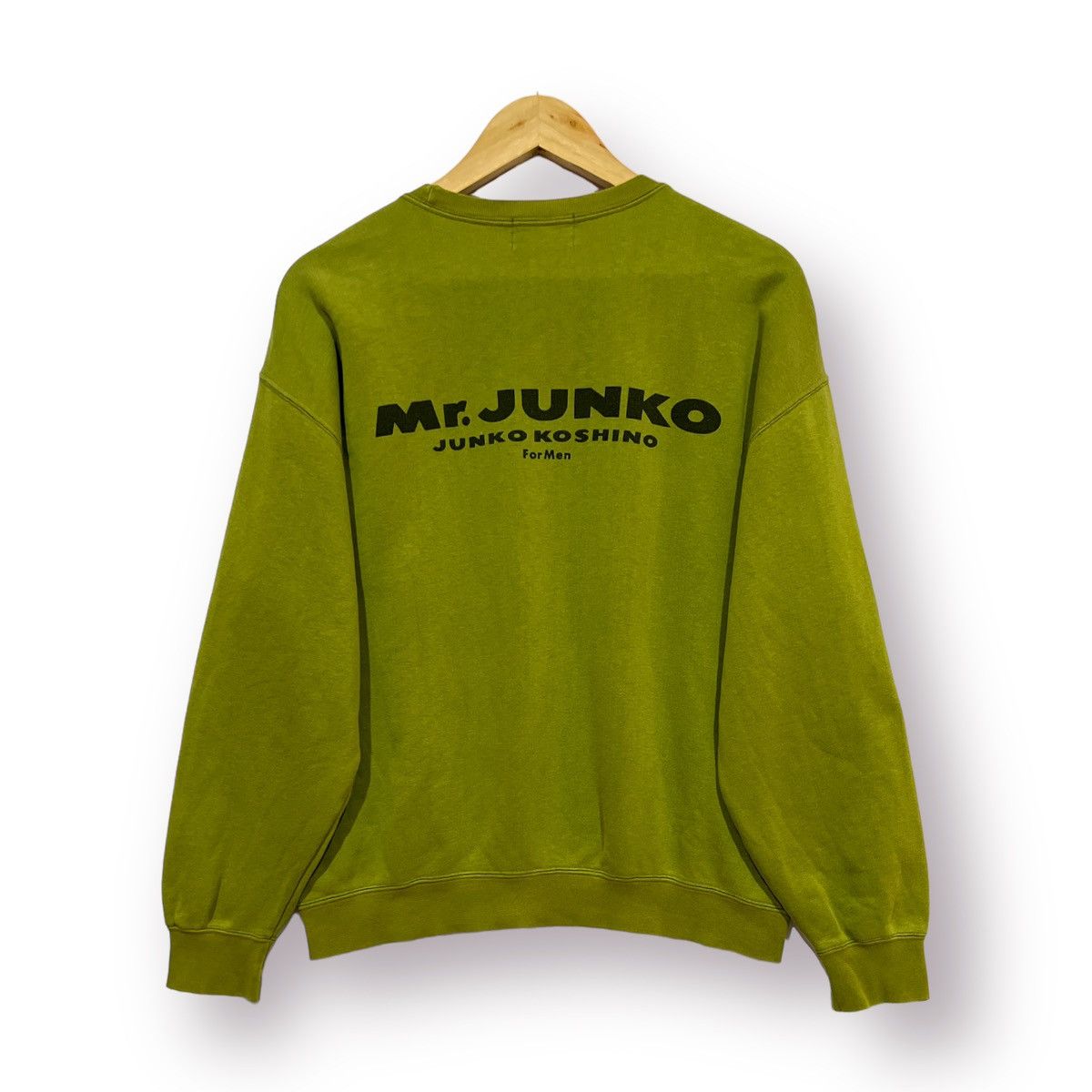It's a tale that sent chills down the spines of an entire nation. Junko Furuta's story isn't just a case file; it's a haunting reminder of humanity's darkest corners. This case left an indelible mark on Japan's history, forcing society to confront the depths of human cruelty. The name Junko Furuta might not be familiar to everyone, but her tragic story remains one of the most shocking criminal cases in modern history.
Imagine being only 14 years old and finding yourself in the clutches of pure evil. That’s exactly what happened to Junko Furuta in December 1988. This young girl's life was tragically cut short after enduring unimaginable horrors. Her story isn’t just about a crime—it’s about the systemic failures and the psychological depths of those who commit such heinous acts.
As we dive into the details of this harrowing case, it’s crucial to remember why we’re retelling this story. It’s not just for shock value. It’s about understanding the lessons we can learn from tragedy and ensuring that such horrors never happen again. So, buckle up because this is going to be a tough read, but it’s necessary.
- Kid And His Mom Cctv The Unseen Stories Behind The Lens
- Unveiling Filmyflywin 2025 Your Ultimate Hub For South Bollywood Hollywood And Hindi Animation
Before we dive deep into the case, here's a quick guide to help you navigate through the article:
- Biography
- The Case
- The Perpetrators
- Psychological Impact
- Media Coverage
- Legal Outcomes
- Lessons Learned
- Junko Furuta's Legacy
- Memorialization
- Conclusion
Biography
Who Was Junko Furuta?
Junko Furuta was a 14-year-old girl from Tokyo, Japan, living a seemingly ordinary life before tragedy struck. Born on April 1, 1974, she was a bright student with dreams and aspirations like any other teenager. But her life took a dark turn on December 2, 1988, when she was abducted by four boys and subjected to unspeakable horrors.
Here’s a quick snapshot of her life:
- Astrid Nelsia The Rising Star You Need To Know
- Mastering Remote Control Raspberry Pi Over Internet Your Ultimate Guide
| Full Name | Junko Furuta |
|---|---|
| Date of Birth | April 1, 1974 |
| Date of Death | December 23, 1988 |
| Age | 14 years |
| Residence | Tokyo, Japan |
| Occupation | Student |
The Case
What Happened to Junko Furuta?
On that fateful day in December, Junko Furuta was abducted by four boys who were barely older than her. These boys, ranging in age from 14 to 16, lured her into their trap under false pretenses. What followed was a nightmare that lasted for 44 days. Junko was held captive, tortured, and eventually murdered in one of the most brutal cases in Japanese history.
During her captivity, she was kept in a room in the perpetrators' home, where they subjected her to physical and psychological abuse. The details of her ordeal are so harrowing that they have been documented in numerous studies and reports. This case wasn’t just about a single act of violence; it was about the systematic degradation of a young girl’s life.
The Perpetrators
Who Were the Boys Behind This Atrocity?
The four boys involved in this case came from different backgrounds, but they shared one thing in common: a lack of empathy. Their ages ranged from 14 to 16, making them juveniles under Japanese law at the time. This legal classification meant that their identities were protected, and they were spared from facing the full brunt of the justice system.
Let’s break down what we know about them:
- Boy A: The ringleader, known for his manipulative nature and leadership skills.
- Boy B: A follower who was easily swayed by Boy A’s influence.
- Boy C: The youngest of the group, but equally involved in the abuse.
- Boy D: The most secretive, often keeping his involvement hidden from others.
These boys weren’t just random individuals. They were part of a complex web of relationships and influences that contributed to their actions. Understanding their motivations and backgrounds is crucial to comprehending the full scope of this tragedy.
Psychological Impact
How Did This Case Affect Society?
The psychological impact of Junko Furuta’s case cannot be overstated. It forced Japanese society to confront uncomfortable truths about its legal system, education, and social structures. Many experts have pointed out that the case highlighted a lack of proper psychological support for both victims and perpetrators.
Studies conducted in the aftermath of the case revealed that many juveniles involved in criminal activities often come from troubled backgrounds. They may have experienced neglect, abuse, or other forms of trauma themselves. This cycle of violence perpetuates itself unless addressed through proper intervention and support systems.
Media Coverage
How Was the Case Reported?
The media played a significant role in shaping public perception of the Junko Furuta case. Initially, the story was reported with caution, given the sensitive nature of the crime and the ages of the perpetrators. However, as more details emerged, the coverage became increasingly graphic, capturing the nation’s attention.
One of the most controversial aspects of the media coverage was the decision to protect the identities of the perpetrators. While this was in line with Japanese law, it sparked debates about accountability and transparency. Many argued that shielding the identities of such criminals only perpetuated the cycle of impunity.
Legal Outcomes
What Happened to the Perpetrators?
Under Japanese law, juveniles are treated differently from adults when it comes to criminal cases. At the time of the Junko Furuta case, this meant that the four boys involved could not be tried as adults. Instead, they were sent to juvenile detention centers, where they served relatively short sentences compared to what they might have faced as adults.
Many legal experts have criticized this aspect of the justice system, arguing that it fails to hold juveniles accountable for their actions. Some have called for reforms that would allow for more severe punishments in cases involving heinous crimes.
Lessons Learned
What Can We Take Away From This Tragedy?
While no amount of reflection can undo the harm caused to Junko Furuta, her story serves as a powerful reminder of the importance of prevention and intervention. Here are some key lessons we can learn:
- Strengthening Legal Frameworks: Laws must evolve to address the complexities of juvenile crime, balancing rehabilitation with accountability.
- Improving Education: Schools should focus on instilling empathy and moral values in students from a young age.
- Enhancing Support Systems: Mental health services and counseling should be made more accessible to at-risk youth.
By addressing these issues, society can work towards preventing similar tragedies in the future.
Junko Furuta's Legacy
How Is She Remembered Today?
Junko Furuta’s legacy lives on through the changes her case inspired. Her story has been the subject of numerous documentaries, books, and films, each aiming to shed light on the dark truths of human nature. Her case has also sparked conversations about the importance of justice, accountability, and empathy in society.
Many organizations and advocates have used her story as a call to action, pushing for reforms in the legal and educational systems. Her memory serves as a reminder of the need for vigilance and compassion in protecting the vulnerable.
Memorialization
How Is Junko Furuta Honored?
Efforts to honor Junko Furuta’s memory have taken various forms over the years. Memorials and tributes have been established in her honor, serving as places of reflection and remembrance. These memorials not only pay tribute to her but also serve as educational tools, reminding future generations of the importance of justice and humanity.
In addition to physical memorials, digital platforms and social media have played a role in keeping her story alive. Online communities dedicated to discussing her case and advocating for change have emerged, ensuring that her legacy continues to inspire action.
Conclusion
As we wrap up this harrowing tale, it’s important to remember why we’re telling it. Junko Furuta’s story is not just about a crime; it’s about the lessons we can learn from tragedy. Her case exposed the flaws in Japan’s legal and social systems, prompting necessary reforms and discussions about accountability and empathy.
We encourage you to reflect on what you’ve read and consider how you can contribute to creating a safer, more compassionate world. Share this article with others, leave a comment, or explore related topics on our site. Together, we can ensure that Junko Furuta’s memory continues to inspire positive change.
And hey, if you’ve made it this far, give yourself a pat on the back. This wasn’t an easy read, but it was necessary. Thanks for sticking with me through this tough but important story.



Detail Author:
- Name : Cole Kassulke
- Username : ehauck
- Email : hahn.melisa@jast.com
- Birthdate : 1997-03-22
- Address : 7016 America Union Apt. 272 Sarinaberg, AK 92491-0747
- Phone : (712) 495-8262
- Company : Schiller Ltd
- Job : Computer
- Bio : Asperiores qui blanditiis aut doloribus impedit magnam necessitatibus eius. Quibusdam facere cum deleniti id possimus corporis. Nemo dolorum repellat placeat. Fugiat non consequatur alias cum.
Socials
tiktok:
- url : https://tiktok.com/@mariekihn
- username : mariekihn
- bio : Commodi dignissimos illum nostrum necessitatibus illo enim cum.
- followers : 6011
- following : 40
linkedin:
- url : https://linkedin.com/in/kihn2000
- username : kihn2000
- bio : Quidem ut nam nesciunt quos.
- followers : 3058
- following : 1989
facebook:
- url : https://facebook.com/marie_dev
- username : marie_dev
- bio : Perferendis magni porro dicta aspernatur.
- followers : 5557
- following : 1636
twitter:
- url : https://twitter.com/mariekihn
- username : mariekihn
- bio : Eum sapiente eos est maiores tempore. Ratione dicta aut dolorem sint non. Doloribus veritatis veniam similique aut tempora. Et quidem blanditiis modi.
- followers : 6086
- following : 1467
instagram:
- url : https://instagram.com/marie7940
- username : marie7940
- bio : Ea nihil doloribus dolore. Dolorem hic cupiditate qui vero voluptas ut.
- followers : 2238
- following : 2722